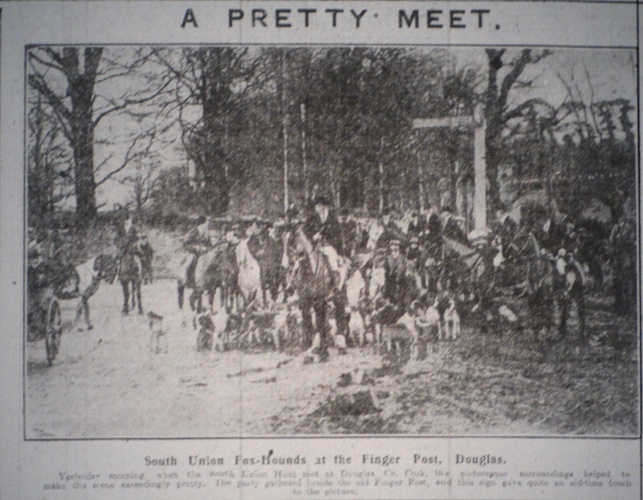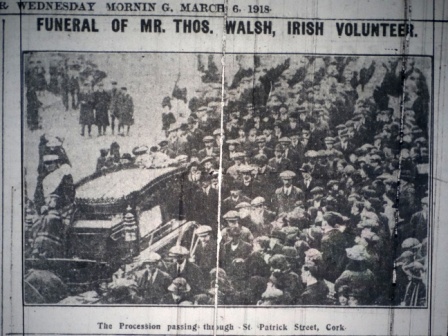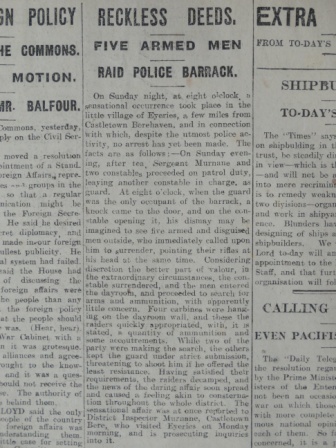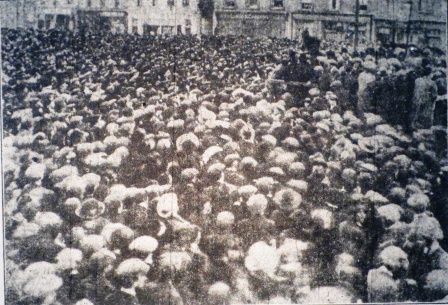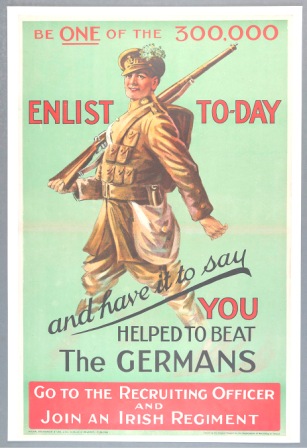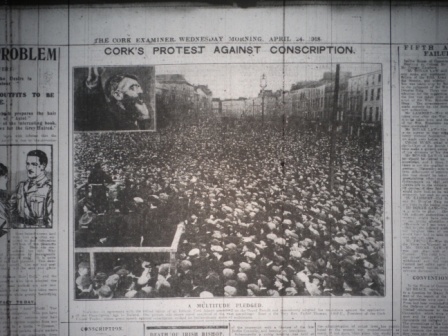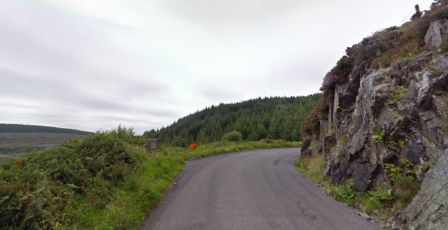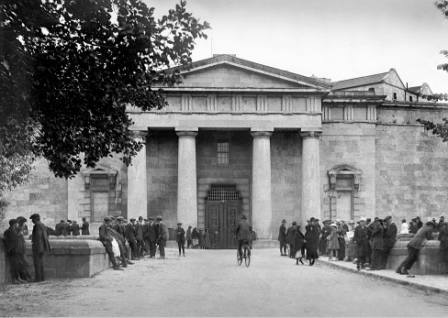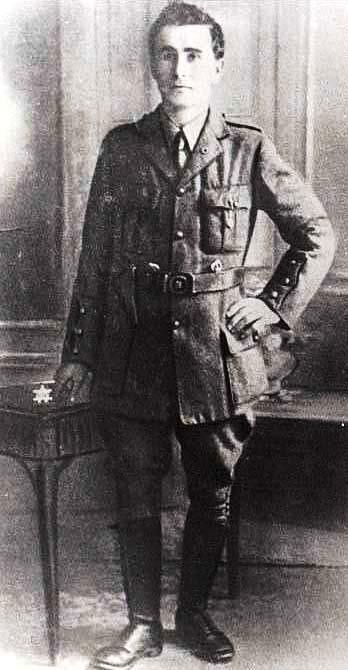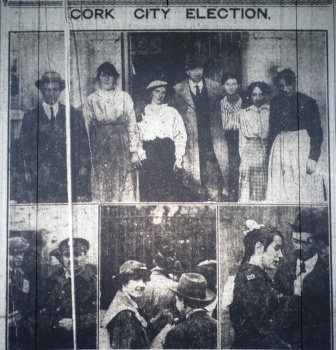1918
-
Introduction
South Union Hunt
01 January 19181 January 1918 marked the beginning of an era in Ireland marked by conflict, revolution and Civil war for County Cork. The county was in a state of flux due to momentous affairs taking place both nationally and internationally. The 1916 Easter Rising, while initially unpopular with the Irish people, quickly became a symbol of Irish resistance to British rule in Ireland. The hegemonic power of The Irish Home Rule movement was beginning to splinter over factions within the party, a greater support for the nationalist Sinn Féin and the continued loss of life in the trenches on the Western Front in World War One.
As the political struggles continued so too did the struggles of ordinary people living in Cork. Food rationing was increased under the Food Control Committee for Ireland in January 1918 and traders in Cork, including the famous Butter Exchange, faced falling exports due to the loss of shipping and greater regulation in the grading system for British markets. Even at the height of the First World War and the continuing economic and social tensions at home between the Irish Nationalists and Unionists, ordinary life and traditions of the County continued unabated.
This image was taken on the 1 January 1918 at showing the South Union Hunt ringing in the New Year in the Douglas area of the city, gathering by the old Finger Post.
References
Cork Examiner, 2 January 1918 -
Funeral of Thomas Walsh and Death of John Redmond
Funeral procession
05 March 1918On Tuesday 5 March, St Patrick's Street in Cork City witnessed a large procession of Irish Volunteers honouring the late Mr Thomas Walsh. Mr Walsh, a Mason, had been a member of the Irish Citizen Army and had taken part in the 1916 Easter Rising. Thomas Walsh was made famous for having been the first person to fire a shot during the rising. He was later sentenced to death which was commuted to ten years in prison in Frongach. He was released in 1918 but suffered from prolonged health conditions such as pneumonia from his imprisonment.
The funeral took place at 3pm from the Cathedral of St Mary and St Anne to St. Finbarr’s Cemetery, located at Glasheen Rd, Togher, Cork City. The large procession included a variety of groups including members of the Irish Volunteers, Irish Volunteers Pipers’ Band, Cuman na mBan, Irish Citizen Army. Mr. Walsh’s coffin was covered with the Sinn Féin Flag and was surrounded by wreaths. It is noted that the cemetery has its own republican plot which is marked by a massive stone cross by the main entrance.
It was announced on 6 March 1918 that John Redmond, the leader of the Irish Parliamentary Party and of the Home Rule movement, had died of heart failure. John Redmond became the leader of the reformed Irish Parliamentary Party in 1900. He was instrumental in pushing for constitutional nationalism and Home Rule and he succeeded in negotiating the Government of Ireland Act which was due to come into effect in August 1914. With the outbreak of the Great War Redmond called for Irish volunteers to join the British army in order to guarantee the rights of small nations and of the implementation of Home Rule
In Cork the news of John Redmond’s death on 6 March caused a sense of shock. Flags on Cork City Hall, the Harbour Board, and the several public buildings and clubs in the city were put at half mast as a sign of respect.
References
Cork Examiner, 6-7 March 1918 -
Eyeries RIC Barracks Raid
Cork Constitution, 20 March 1918
17 March 1918While the Soloheadbeg Ambush in County Tipperary on 21 January 1919 is traditionally regarded as the beginning of hostilities in the Irish War of Independence there had been various raids in County Cork in 1918. The Eyeries RIC Barracks on the Beara Peninsula proved to be a target of opportunity for the IRA. On the night of Sunday, 17 March 1918, at around eight p.m. an armed raid was launched on the local RIC Barracks in the village of Eyeries located a few miles from Castletown Berehaven. The station was isolated and would have had a complement of four RIC officers.
The RIC were an armed force with rifles and revolvers kept in barracks, they provided an ideal way of gathering arms for the IRA which was ill equipped in these early actions. The five volunteers involved in the assault on the Eyeries barracks were: Joe Foley, Sean Driscoll, Con Dwyer, Peter O’Neill and Christy O’Connell. Only one Constable named Dalton was present in the Barracks and four Lee-Enfield carbines and ammunition were taken. This form of raid became common place across the country as the IRA attempted to secure arms and remove the RIC as they symbolised the authority of the British Administration in Ireland.
References
Cork Constitution, 20 March 1918; Cork Examiner, 23 April 1918 -
Anti-Conscription Cork rally; German Spring Offensive
Anti-conscription rally in Cork, April 1918
15 April 1918On 21 March 1918 the German Spring Offensive or Kaiserschlacht commenced using new tactics such as fast moving storm trooper regiments and the use of rolling artillery barrages. These new tactics contributed to several breakthroughs throughout the Allied lines. By the end of March and the beginning of April the German Army had captured close to a twelve hundred square miles and pushed the front line forty miles forward, an impressive feat in terms of the low mobility warfare of World War One. The offensive caused consternation amongst the Allied powers and Britain hoped to raise another 550,000 men through Conscription to halt the German advance.
Conscription had already been in force in Britain from January 1916 under the Military Service Act. The British cabinet decided to push for a Military Service Act (No.2) which would introduce conscription to Ireland and raise an extra 150,000 men. This had an immediate consequence of mobilising almost total Irish opposition against the Act from both Constitutional and hard-line nationalist figures and members of the Catholic Hierarchy. Even Southern Unionists were disquieted at this new development, fearing that it would inflame further nationalist sentiment in Ireland. On Monday the 15 April 1918, a large crowd gathered in front of a wooden platform on the Grand Parade for an anti-conscription bill protest. The Lord Mayor of Cork Mr Thomas C. Butterfield called for the unified resistance of all Irishmen to stand against conscription. A Cork City Council emergency meeting was held on the same day with members conveying their sentiment to Conscription. The Bill was described as a ‘Blood Tax’, a ‘Massacre under the guise of law’ and that the bill was an attempt to make ‘Ireland a wilderness of carcasses and ash’.
References
Cork Examiner, 6, 16-17 April 1918 -
Conscription Comes to Ireland
Recruitment poster, April 1918
18 April 1918On Thursday 18 April 1918, The Conscription Bill or Military Services Act (No.2) became law. It is important to note that even though it was declared law on 18 April, it still was not allowed to come into effect until fourteen days after an order in Council had been laid on the table in Parliament. Even though many Irish men had already volunteered to fight in the war the British still felt the necessity of the Conscription Bill in order to conscript more that 150,000 Irish men to the War in order to counter the German Spring Offensive. They did not appear to consider the effect it would have on uniting the Irish people and their leaders in opposing the bill and in turn cementing Irish public opinion in favour of a more hard-line nationalist stance over the constitutional nationalism which had prevailed in the previous decades. The British government hoped that the Irish people would take the deal of Home Rule once the Conscription Bill was allowed to take effect
References
Cork Examiner, 19 April 1918Anti-conscription pledge
-
General Strike
Cork Examiner, 24 April 1918
23 April 1918On Tuesday 23 April 1918 a national Anti-Conscription general strike was held which saw the cogs of industry in Ireland come to a halt for 24 hours. The Strike had been called for under the Solemn League and Covenant 1918 to highlight massed Irish resistance to the implementation of conscription over voluntary service. The resistance to conscription was witnessed in Cork City as thousands of Cork's labour force assembled on Grand Parade in protest against the Conscription Act to Ireland. The protest was lead by the President of the Cork United Trades, Very Rev. Father Thomas, whose speech evoked extraordinary enthusiasm.
The mobilised resistance to the Military Service Act was successful and Conscription was never implemented on the island of Ireland. By late April the German Advance had stalled as they ran out of reserves and materiel. The German losses were irreplaceable while the Allies only grew in strength as American forces began to arrive on the continent. The British government decided conscription was no longer necessary and never administrated the Act.
References
Cork Examiner, 24 April 1918 -
Béal a’Ghleanna Ambush
Béal a’Ghleanna
7 July 1918The first armed attack on the Royal Irish Constabulary to occur in Cork since the 1916 Easter rising took place on Sunday 8 July 1918 at Béal a'Ghleanna (The Mouth of the Glen), on a mountain road linking Ballingeary and Ballyvourney. That day Constables Butler and Bennett of Ballingeary station had travelled to Ballyvourney to help prevent a Feis being held at nearby Coolea. The ambush took place as the Constables approached the glen with several local men involved. The volunteers involved that day were Sean Lynch, Tadhg Twomey, Liam Twomey, James Moynihan, Jeremiah O'Shea, Dan Tady Sweeney and Cornelius O'Reilly.
Dan Mac Sweeney and Liam Twomey were the first to draw their revolvers on the two Constables leading to Constable Butler reaching for his rifle, and in doing so, received a non-fatal bullet wound to the neck. Constable Bennett was not injured in the exchange or the course of the ambush. Once the Constables were subdued, their side-car was pushed into the glen and both rifle and ammunition were taken. This form of ambush was a precursor to the form of Guerrilla warfare which would soon envelope County Cork in the years to come
ReferencesO'hÉalaithe, Donal. (2014) Memoirs of an old warrior : Jamie Moynihan's fight for Irish freedom, 1916-1923. Mercier Press: Cork
Location of Beal a’Ghleanna in County Cork
-
Donnchadha MacNeilus Rescue and End of the Great War
Cork Prison
11 November 1918On the eleventh hour of the eleventh day of the eleventh month the Great War came to its conclusion as the German Empire surrendered to the Allied forces. The Central powers were in disarray with the Ottoman and Austro-Hungarian Empires effectively defunct by late October 1918. The German Empire was on its last legs and the Kaiser Wilhelm II abdication on 9 November paved the way for an Armistice which came into effect on 11 November. The end of the war signified a changing continent with various new states arising from the ashes of empire. The First World War claimed the lives of close to 16 million dead including 49,000 Irish Soldiers of which over 4,000 were from Cork. Celebrations including brass bands, parades and processions took place throughout Cork in order to commemorate Armistice Day.
On the same day that the War ended in Europe a plan to free IRA Captain and Armourer Donnchadha MacNeilus from the Cork County Gaol on Western Road, Cork City. MacNeilus had been imprisoned for the shooting of Head Constable Clarke during a search of his private residence for firearms. On 11 November Irish Volunteers went in pairs to the Gaol under the pretence of visiting prisoners once inside the six volunteers overpowered to Warders and severed the telephone lines to the Gaol. Donnchadha MacNeilus was released and the six volunteers including Brigade Commandant Sean O’Hegarty all escaped without injury or capture.
References
Cork Examiner, 12-14 November 1918Donnchadha MacNeilus
-
Irish General Election
Election coverage in Cork Examiner
14 December 1918On Saturday 14 December 1918, Ireland hosted its first General Election in eight years. The political fabric of Ireland had been changed irrevocably with Constitutional nationalism falling out of favour with a more forceful Independence movement in the ascendency. The 1918 election was an election for the British House of Commons Westminster Parliament. The Sinn Féin party entered the campaign with significant support over the National Irish Parliamentary Party (IPP) who dominated Irish politics since the 1880s. The Irish Parliamentary Party was seen in a negative light by the majority of nationalists for their support of the British government in the continuing of the Great War and also for their refusal to support a true independence movement over Home rule. Physical Force nationalism had replaced constitutional nationalism across the majority of nationalist voters.
The election was the first where franchise was widened to women and men over 21 which greatly increased the electorate. The passing of the ‘Representation of the People Act of 1918’ earlier in 1918 increased the Irish electorate from 700,000 to nearly 2 million Irish voters. The Act allowed all Irish women who were aged 30 years and over and home owners or married to home owners, the right to vote.
The results of the 1918 general election were postponed until Saturday 28 December 1918 in order for postal votes from the men still stationed in Europe after the conclusion of the war to be counted. Out of 105 seats Sinn Féin secured 73 seats of which 25 were returned as unopposed, 17 of those seats being from Munster. This was a landslide win for Sinn Féin with a total of 476,087 votes or 46.9% of the vote. The first woman to be elected to the British House Of Commons was Countess Markievicz, who did not take her seat with other Sinn Féin elected members.
The following are the names of the candidates from the nine Cork seats;
Cork City:
James Walsh 1st Preference Votes = 20,801
Liam De Roiste 1st Preference Votes = 20,506
Cork East:
David Kent 1st Preference Votes = Unopposed
Cork Midlands:
Terence Mac Swiney 1st Preference Votes = Unopposed
Cork North:
Patrick O'Keeffe 1st Preference Votes = Unopposed
Cork North East:
Thomas Hunter 1st Preference Votes = Unopposed
Cork South:
Michael Collins 1st Preference Votes = Unopposed
Cork South East:
Diarmuid Lynch 1st Preference Votes = Unopposed
Cork West:
Seán Hayes 1st Preference Votes = Unopposed
References
Cork Examiner, 16-30 April 1918
